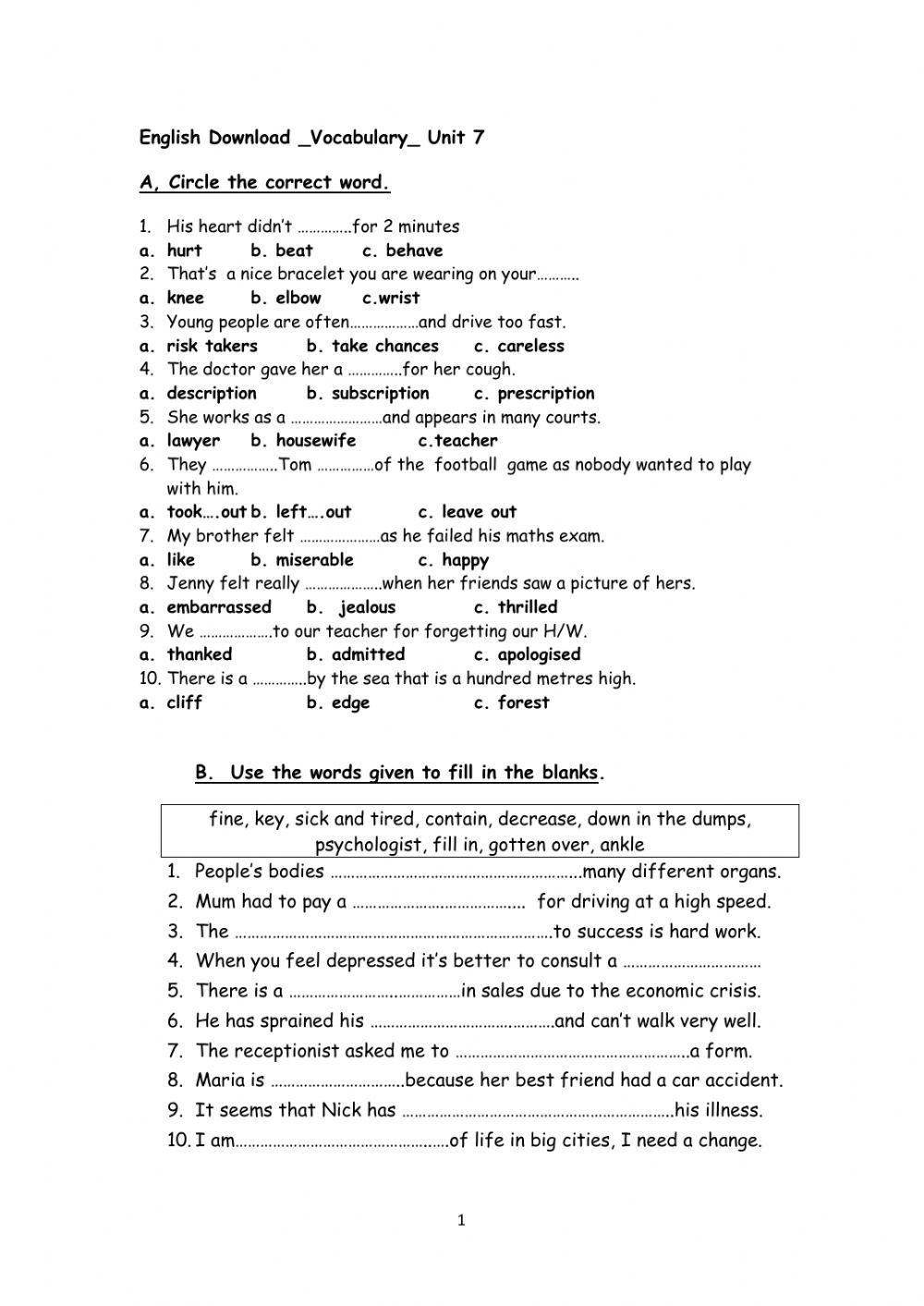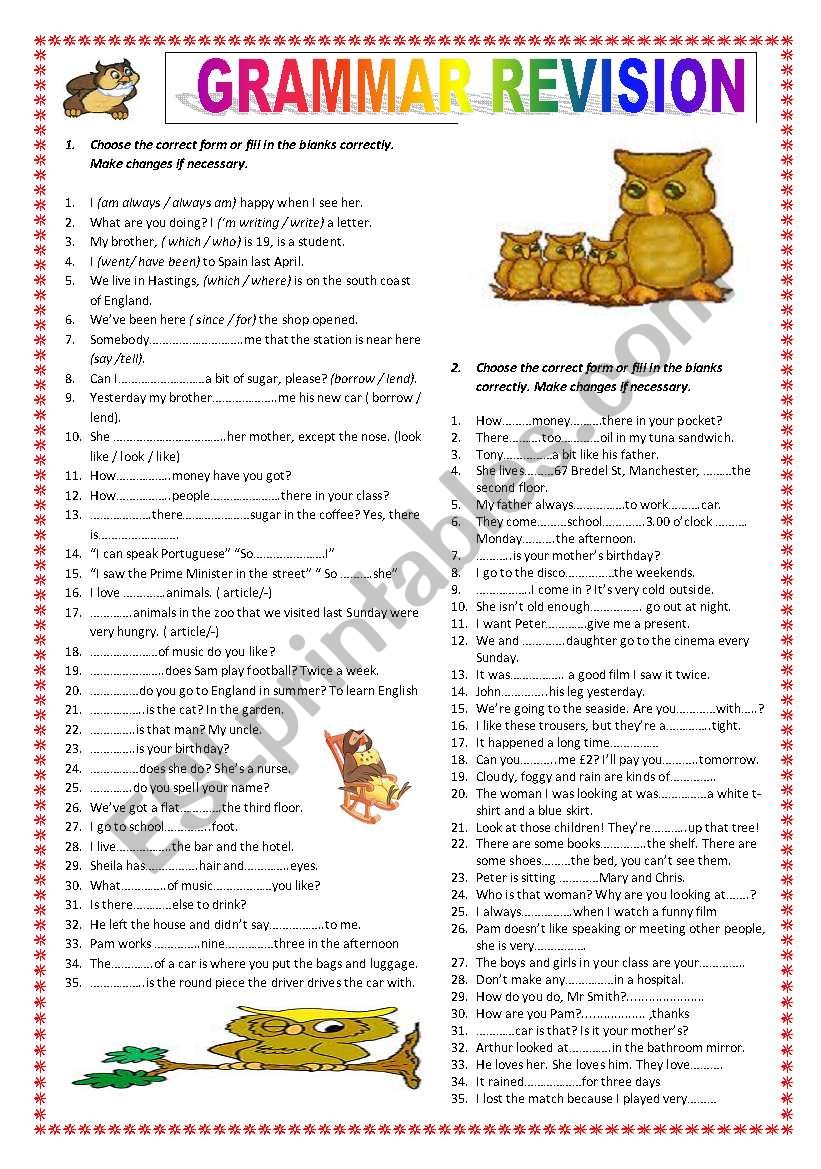
Unlocking Intermediate Fluency: The Power and Versatility of B1 ESL Worksheets
The journey of learning a new language is often described as a series of stepping stones, each representing a new level of proficiency and understanding. For English as a Second Language (ESL) learners, navigating the intermediate phase is a crucial, yet often challenging, period. This is where the B1 level, as defined by the Common European Framework of Reference for Languages (CEFR), plays a pivotal role. It marks the transition from basic communication to a more independent and nuanced use of the language. And at the heart of mastering this stage lies a powerful and versatile tool: B1 ESL worksheets.
These carefully designed materials are more than just exercises; they are structured pathways that help learners solidify their foundational knowledge, expand their linguistic repertoire, and build the confidence necessary to tackle more complex communication scenarios. This article will delve into the significance of the B1 level, explore the diverse benefits and types of B1 ESL worksheets, and provide insights into how both teachers and students can maximize their impact on the path to intermediate fluency.
Understanding the B1 Level: A Stepping Stone to Independence

Before diving into the specifics of worksheets, it’s essential to grasp what B1 proficiency entails. A B1 learner, often referred to as an "intermediate" or "threshold" user, can:

- Understand the main points of clear standard input on familiar matters regularly encountered in work, school, leisure, etc.
- Deal with most situations likely to arise whilst travelling in an area where the language is spoken.
- Produce simple connected text on topics that are familiar or of personal interest.
- Describe experiences and events, dreams, hopes, and ambitions and briefly give reasons and explanations for opinions and plans.


This level is a significant leap from A2 (pre-intermediate), where communication is more basic and often reliant on memorized phrases. At B1, learners begin to generate their own sentences, engage in more spontaneous conversations, and comprehend a wider range of authentic materials. However, this transition requires consistent, targeted practice – precisely what B1 ESL worksheets are designed to provide. They bridge the gap, ensuring that grammatical structures and vocabulary acquired at earlier stages are reinforced, while new, more complex elements are introduced in a manageable way.
The Multifaceted Benefits of B1 ESL Worksheets

The utility of B1 ESL worksheets extends far beyond simple drill exercises. They offer a multitude of benefits for both educators and students:
-
Structured Practice and Reinforcement: Worksheets provide a systematic way to practice specific grammar points, vocabulary sets, or language functions. This structured approach helps learners consolidate what they’ve learned and identify areas where they need more practice. For example, a worksheet focusing on the Present Perfect tense allows for repeated exposure and application, solidifying understanding.

-

Development of All Four Skills: While often associated with grammar and vocabulary, many B1 ESL worksheets are designed to integrate and develop all four core language skills: reading, writing, listening, and speaking. A single worksheet might include a reading passage followed by comprehension questions, a gap-fill exercise for vocabulary, and a prompt for a short written response or a pair discussion.
-
Variety and Engagement: Good worksheets incorporate diverse activity types – from fill-in-the-blanks and matching to true/false questions, sentence transformations, and open-ended writing prompts. This variety keeps learners engaged and prevents monotony, catering to different learning styles.
-
Assessment and Feedback Tools: For teachers, worksheets serve as an excellent informal assessment tool. They quickly reveal students’ strengths and weaknesses, allowing for targeted instruction and feedback. For students, self-correcting worksheets with answer keys offer immediate feedback, promoting independent learning.
-
Teacher Time-Saver and Student Independence: High-quality, ready-to-use worksheets save teachers valuable preparation time. They can be easily integrated into lesson plans, used for homework, or provided as extra practice. For students, they offer a means of self-study, allowing them to review and practice at their own pace outside of the classroom.
-
Confidence Building: Successfully completing a series of well-designed exercises on a worksheet can significantly boost a learner’s confidence. This sense of accomplishment encourages them to take on more challenging tasks and participate more actively in class.

Diverse Types of B1 ESL Worksheets: A Comprehensive Toolkit
The range of B1 ESL worksheets available is vast, catering to every aspect of language learning. Here’s a breakdown of common types and their focus:
A. Grammar-Focused Worksheets
At the B1 level, grammar becomes more intricate, moving beyond basic tenses to include more complex structures necessary for expressing nuanced ideas.
- Key Grammar Points:
- Past Simple vs. Past Continuous: Differentiating between completed actions and actions in progress in the past.
- Present Perfect Simple and Continuous: Emphasizing experience, duration, and results of past actions connected to the present.
- Conditionals (First and Second): Expressing real and hypothetical situations and their outcomes.
- Passive Voice: Understanding and forming sentences where the action’s recipient is the focus.
- Reported Speech (basic): Converting direct speech into indirect speech for statements, questions, and commands.
- Modals of Obligation, Permission, and Advice: (e.g., must, should, can, could, might).
- Gerunds and Infinitives: Understanding when to use verb forms ending in -ing or ‘to + verb’.
- Activity Types: Fill-in-the-blanks, sentence transformation, error correction, multiple-choice questions, matching sentence halves, creating sentences from prompts.
B. Vocabulary Building Worksheets
Expanding vocabulary is paramount at the B1 level, enabling learners to discuss a broader range of topics.
- Key Vocabulary Areas:
- Travel and Tourism: Describing destinations, transport, accommodation, common travel problems.
- Work and Education: Discussing jobs, careers, studies, qualifications, workplace issues.
- Health and Lifestyle: Talking about symptoms, healthy habits, common illnesses, fitness.
- Environment and Society: Discussing global issues, community, social responsibility.
- Relationships and Feelings: Expressing emotions, describing people, talking about family and friends.
- Phrasal Verbs: Common multi-word verbs (e.g., take off, put up with, look forward to).
- Collocations: Words that naturally go together (e.g., make a decision, take a break).
- Activity Types: Matching words to definitions, gap-fill sentences, crosswords, word searches, synonym/antonym exercises, word formation (e.g., noun to adjective).
C. Reading Comprehension Worksheets
B1 readers can understand the main points of clear, short texts. Worksheets build on this by challenging them with slightly more complex or authentic materials.
- Text Types: Blog posts, short news articles, emails, informal letters, advertisements, short stories, reviews.
- Tasks: True/False statements, multiple-choice questions about specific details or main ideas, identifying opinions or facts, answering open-ended questions, summarizing sections, identifying topic sentences.
D. Listening Comprehension Worksheets
At B1, learners can follow the main points of clear speech on familiar topics. Worksheets help refine this skill.
- Audio Types: Short dialogues, simple news reports, announcements, interviews, short talks, voicemail messages.
- Tasks: Listening for specific information (names, numbers, times), identifying the main idea, true/false statements, completing notes or forms, ordering events, identifying speakers’ attitudes.
E. Writing and Speaking Prompt Worksheets
These worksheets encourage productive skills, moving learners from recognition to generation of language.
- Writing Prompts:
- Informal Letters/Emails: To friends, family, or for simple inquiries.
- Descriptions: Describing people, places, or objects.
- Short Narratives: Telling a simple story about an experience.
- Opinion Pieces: Expressing simple opinions on familiar topics with basic reasons.
- Fill-in-the-blanks: Completing sentences or paragraphs with appropriate vocabulary or grammar.
- Speaking Prompts:
- Discussion Questions: Open-ended questions on familiar topics (e.g., hobbies, travel, future plans).
- Role-Play Scenarios: Practicing everyday situations (e.g., ordering food, asking for directions, making a complaint).
- Picture Description: Describing what’s happening in a photo or image.
- Information Gap Activities: Students have different pieces of information and must speak to complete a task.
Effective Implementation: Maximizing the Impact of B1 ESL Worksheets
The effectiveness of B1 ESL worksheets lies not just in their content, but in how they are used.
For Teachers:
- Integrate Thoughtfully: Don’t just hand out worksheets. Use them as a springboard for discussion, a pre-reading activity, a post-listening consolidation, or a warm-up for a speaking task.
- Provide Clear Instructions: Ensure students understand what they need to do. Model the first few answers if necessary.
- Encourage Collaboration: Many worksheets can be done in pairs or small groups, fostering peer learning and communication.
- Provide Constructive Feedback: Go beyond just marking answers right or wrong. Explain why an answer is incorrect and offer guidance for improvement. Turn errors into learning opportunities.
- Differentiate: Not all B1 learners are at the exact same level. Have some extension activities for faster finishers or provide simpler versions for those struggling.
- Review and Follow-up: Always go over the answers as a class, clarifying doubts and reinforcing concepts.
For Students (Self-Study):
- Be Consistent: Regular, short bursts of practice are more effective than infrequent, long sessions.
- Don’t Just Memorize Answers: Understand the why behind the correct answers, especially for grammar exercises.
- Use Answer Keys Wisely: Try to complete the worksheet first without peeking, then check your answers. If you made a mistake, try to understand why.
- Identify Weaknesses: If you consistently struggle with a particular grammar point or vocabulary set, make a note of it and seek additional resources or clarification from your teacher.
- Practice Productively: For writing and speaking prompts, don’t just think the answers; actually write them down or speak them aloud. Record yourself if possible.
Where to Find Quality B1 ESL Worksheets
The internet is a treasure trove of resources for B1 ESL worksheets. Many reputable websites offer free, downloadable materials, while others provide premium content for a subscription.
- Educational Publishers: Many ESL textbook publishers (e.g., Cambridge, Oxford, Pearson) offer supplementary worksheets online.
- ESL Resource Websites: Sites like British Council LearnEnglish, ESL-Brains, BusyTeacher, ESL Printables, and ISLCollective provide a vast array of materials, often categorized by CEFR level.
- Teacher-Created Content: Platforms like Teachers Pay Teachers allow educators to share and sell their own high-quality materials.
- Authentic Materials: Adapt real-world texts (news articles, blog posts, song lyrics) to create your own B1-level comprehension or vocabulary tasks.
Conclusion
The journey to fluency in English is multifaceted, requiring dedication, varied practice, and the right tools. For learners at the B1 level, B1 ESL worksheets stand out as an indispensable resource. They provide the structured practice needed to consolidate grammar, expand vocabulary, and refine all four language skills, ultimately bridging the gap between basic communication and confident, independent language use.
Whether used in a classroom setting or for self-study, these versatile materials empower learners to take ownership of their progress, identify their strengths and weaknesses, and systematically build the linguistic foundation necessary for higher levels of proficiency. By leveraging the power of well-designed B1 ESL worksheets, learners can transform the intermediate phase from a plateau into a launchpad, propelling them towards greater fluency and communicative success in the English language.

